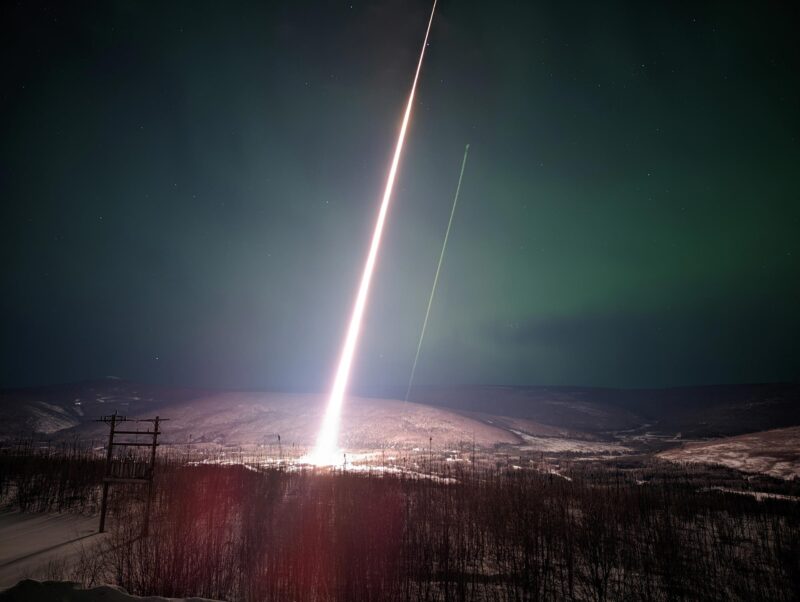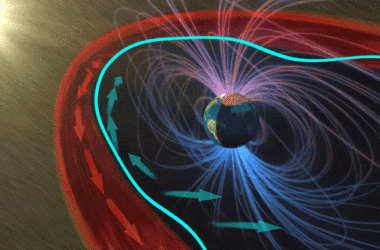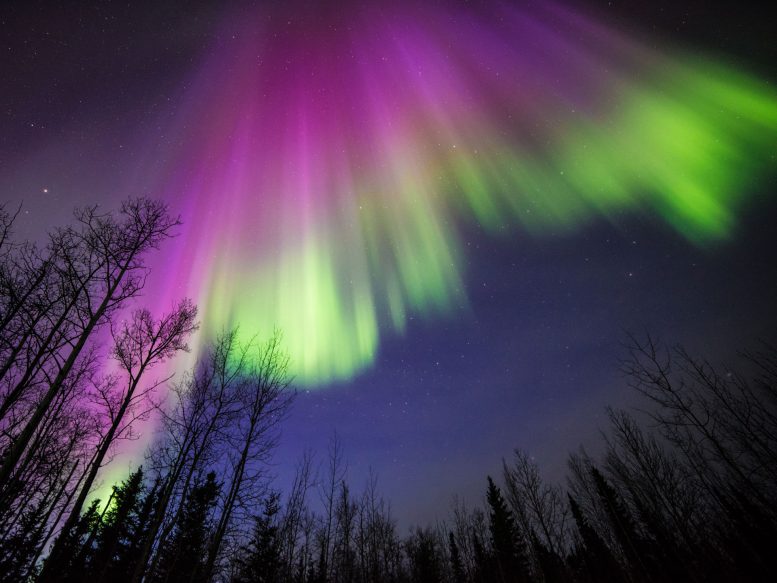
Cette image d’une aurore colorée a été prise à Delta Junction, en Alaska, le 10 avril 2015. Toutes les aurores sont créées par des électrons énergétiques, qui pleuvent depuis la bulle magnétique de la Terre et interagissent avec les particules de la haute atmosphère pour créer des lumières rougeoyantes qui s’étendent dans le ciel. Crédit : Image fournie par Sebastian Saarloos.
;” data-gt-translate-attributes=”[{” attribute=””>NASA’s citizen science projects are collaborations between scientists and interested members of the public. Through these collaborations, volunteers known as citizen scientists have helped make thousands of important scientific discoveries. Aurorasaurus is one such project that tracks auroras around the world in real time via reports on its website and on Twitter.
Aurorasaurus often partners with other organizations to complement science with citizen science and recently Aurorasauraus partnered with NASA’s Loss through Auroral Microburst Pulsations (LAMP) mission. Early on the morning of Saturday, March 5, 2022, the LAMP mission successfully took flight, flying straight into a pulsating aurora.
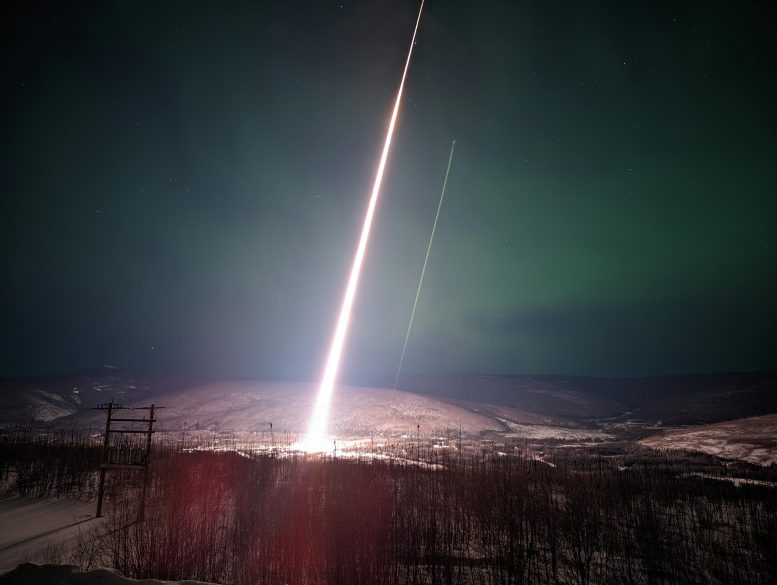
LAMP rocket launch. Credit: LAMP Mission
Pulsating auroras are quirky, shy auroral forms. They occur within diffuse auroras, and look like pulsating patches toward the equator that turn on and off every few seconds. They also have irregular shapes that reappear. They usually occur late in the night or early in the morning, after the main arcs have subsided. They dance often but are less frequently caught on camera due to their dimness and timing. Because auroras reveal invisible structures and pulsating auroras are caused by electrons with huge amounts of energy, pulsating auroras are important for studying how our planet gets energy from space.
The LAMP team included several of Aurorasaurs’ superuser group, the Aurorasaurus Ambassadors, who were excited to work together on a citizen science campaign around the mission. As part of the citizen science collaboration, the Aurorasaurus and LAMP teams asked for citizen scientists’ questions about pulsating aurora. Here are their answers.
What is the difference between the aurora that looks like a curtain and that which just looks like a fuzzy patch or cloud in the sky?
Auroras that look like curtains are called “discrete auroras,” and auroras that look like a fuzzy patch or cloud are called “diffuse auroras.” There’s a lot of science that goes into which makes an appearance at what time of night, and it can differ depending on your location.
If you are watching from the auroras’ usual location at high latitudes—for example, from Fairbanks, Alaska, or Reykjavik, Iceland—you can see auroras caused by geomagnetic storms, which are caused by intense storms of particles and energy from the Sun. But more commonly you’ll see regular, smaller “auroral substorms.” These are caused by a different process. Both diffuse and discrete auroras happen as part of the natural progression of the more common process called a substorm.
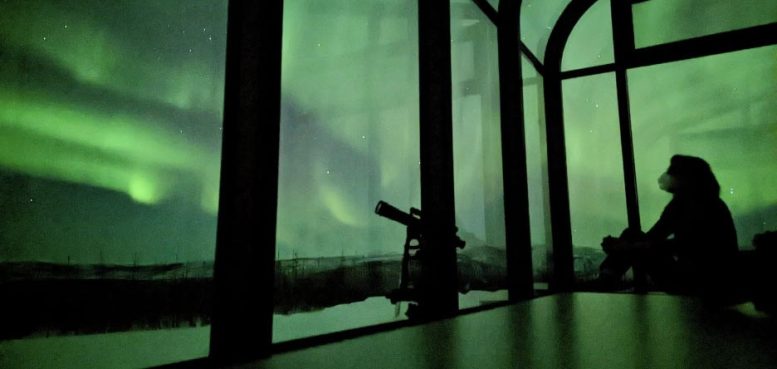
A scientist watches aurora from Poker Flat, Alaska. Credit: Dr. Alexa Halford
If you are watching from mid-latitudes like North Dakota or southern Alberta, the aurora you see will likely be caused by a geomagnetic storm. Stronger storms generate both types of aurora and tend to push the auroras further down toward the equator.
Is it normal to have pulsating aurora and other kinds of aurora in the sky together?
Yes, it is very common for pulsating aurora to appear alongside other types. Depending on your location, you might see part or all of the sky pulsating. Much like discrete auroras, pulsating auroras fan out across great distances and are visible from different perspectives, based on your location. You could even find yourself in a special location where, in addition to pulsating auroras, you can see discrete aurora evolving to the north and diffuse aurora pulsing to the south, with a distinct edge between the two.
There are also many different sub-types of pulsating aurora. Some form shapes that hold their edges like a patch turning on and off, while some “whoosh” on and off in curling, dragonlike shapes. Another type of aurora forms shapes that are unusually flat, like pancakes in the sky. Seeing one of these types might mean that there’s some interesting science going on in the Earth’s ionized upper atmosphere, or in the way particles rain down from space. Citizen scientists’ photos of these displays from multiple locations may help scientists find more clues to the mystery of how they occur.
I am curious about the speed of the pulsating aurora and what makes it dance so fast. It is almost like being in an outdoor nightclub!
Pulsating auroras can dance slowly or quickly, and can flash both pink and green. They can especially give a nightclub effect when multiple things are happening at once. Here are two factors that contribute to the lights turning on and off, which is a time-based or “temporal” effect.
- Nous pensons que les aurores pulsantes sont causées par des ondes spéciales appelées “ondes chorus” qui interagissent avec des particules dans l’espace proche de la Terre. Ces ondes peuvent donner de l’énergie aux particules, en les faisant rebondir dans l’atmosphère. La fréquence des groupes d’ondes chorus correspond à la fréquence à laquelle les particules sont projetées dans la haute atmosphère, et donc à la fréquence des pulsations irrégulières que vous voyez. Parfois, il y a même des variations à plus grande vitesse intégrées dans la lumière qui ne sont pas visibles à l’œil nu ou aux caméras ordinaires.
- Les flashs roses ultrarapides sont causés par la chimie de l’azote gazeux. Les couleurs des aurores boréales sont obtenues lorsque des atomes et des molécules de la haute atmosphère sont excités et libèrent ensuite cette énergie supplémentaire sous forme de lumière. Les différents gaz produisent des couleurs différentes, et le processus de libération se déroule à des vitesses différentes selon le type de gaz. L’azote, qui produit une couleur rose, émet de la lumière très rapidement – plus rapidement que l’oxygène vert – et le rose semble donc se déplacer plus rapidement.
Combinez ces éléments et vous obtiendrez des affichages brillants et rapides !
Puis-je voir des aurores pulsantes dans l’état de Washington ?
Oui, des aurores pulsantes peuvent se produire aux latitudes moyennes pendant les grandes tempêtes géomagnétiques. Gardez un œil sur Aurorasaurus et sur notre site web. Tableau de suivi des tempêtes pour vous aider à suivre l’activité aurorale. Et si vous voyez des aurores pulsantes, vous pouvez faire un rapport scientifique citoyen à Aurorasaurus ! Les aurores pulsantes peuvent être énormes et couvrir des centaines de kilomètres. Plus le nombre d’emplacements où elles sont signalées est important, plus notre compréhension scientifique peut progresser. Le projet est reconnaissant à tous ceux qui ont soumis des rapports pendant la campagne de la mission LAMP.
Pourquoi est-il important d’envoyer des instruments au-dessus des aurores pulsantes pour les mesurer ? Quelles sont les choses qui ne peuvent pas être mesurées depuis le sol ou les satellites ?
Alors que les satellites et les observations au sol peuvent capturer certains aspects, nous pouvons obtenir une meilleure image de la cause de la dynamique aurorale en collectant des particules à l’intérieur ou très près de l’aurore. Pour ce faire, les scientifiques envoient des instruments pour collecter des données au niveau et juste au-dessus de l’emplacement de l’aurore, à l’aide d’un type spécial de fusée connu sous le nom d’aéronef à réaction. fusée-sondequi peut voler dans les aurores.
Les fusées-sondes constituent un moyen unique de recueillir des données sur les aurores in situ, dans des régions qui seraient autrement difficiles à échantillonner. Les fusées-sondes se déplacent également plus lentement que les satellites, ce qui leur permet de mieux capter les phénomènes en mouvement rapide tels que les aurores avec des détails exquis. Les scientifiques peuvent ainsi en apprendre davantage sur la “microphysique”, c’est-à-dire la physique des ondes qui interagissent avec de minuscules particules chargées. Le 5 mars 2022, une fusée de sondage a lancé LAMP à environ 267 miles d’altitude où il a survolé une aurore pulsante.

Le Dr Allison Jaynes examine les données la nuit du lancement. Crédit : Mike Shumko
Le 5 mars 2022, une fusée sonde a lancé le LAMP à environ 267 miles d’altitude où il a volé à travers une aurore pulsante. En outre, LAMP avait également deux appareils photo à bord pour prendre des photos de l’aurore, d’une équipe japonaise comprenant des membres de JAXA, Nagoya University, Tohoku University, Kyushu Institute of Technology, and the University of Electro-Communications. Because the rocket itself rotates about once per second, the cameras were mounted on a “de-spun” platform. The platform rotates in the opposite direction of the rocket at the same rate as it spins, so the cameras can stay relatively still and take clear pictures. The camera provided real-time still images of the pulsating patches to the scientists on the ground. This was the first time that a camera with a de-spun platform mounted to a rocket has been successfully demonstrated!
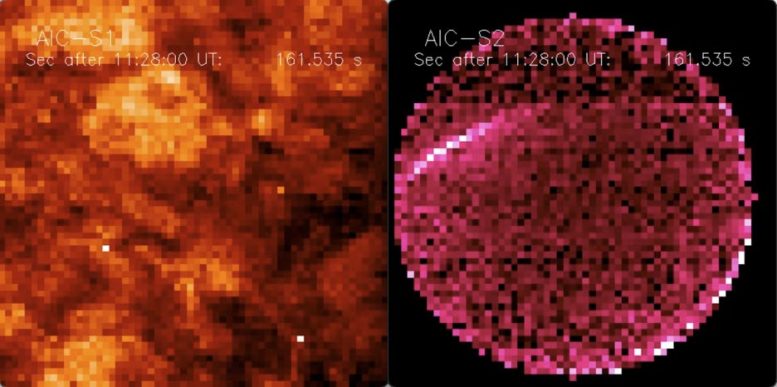
Simultaneous images of pulsating aurora from the two cameras attached to LAMP. Credit: AIC-S1/AIC-S2 team
Has rocket citizen science been done before?
Yes! Aurorasaurus helped connect two-woman citizen science team Hearts in the Ice with a rocket mission in Norway during their time overwintering in Svalbard. Read more here.
What’s it like to help with a mission like this?
Pretty amazing, according to Aurorasaurus Ambassador and senior undergraduate student at the University of North Dakota,Vincent Ledvina, who helped with the launch:
I just got back from Fort Yukon, Alaska, where Aurorasaurus helped connect me with an opportunity to assist with the NASA LAMP sounding rocket mission. It was eye-opening and rewarding to watch the team effort, and I am grateful to Aurorasaurus and the LAMP team for opening this door to me. Seeing all the moving parts (literally and figuratively) that have to come together in order for the mission to be a success makes me realize how important communication and leadership are in science. Logistics in remote areas is a challenge I never fully realized until this mission. Although I was staying at an Air Force station, I only had access to a low-bandwidth satellite internet connection with no cell service, so the most reliable communication was a landline phone that looked straight from the 1980s!
While I had some sense of how aurora cameras work from the North Dakota Dual Auroral Camera (NoDDAC) project, I finally got a taste of what real science-grade cameras are like. My job was to make sure three special cameras — some of which were from the Japanese rocket team — were running when the LAMP rocket launched, to capture video of pulsating aurora. The video will be correlated with data the rocket gathered as it flew through the aurora.
Photographe passionné lui-même, Vincent Ledvina a pris 40 000 de ses propres images pendant le voyage et a réalisé cette magnifique compilation.
Les aurores pulsantes sont un phénomène fascinant et mystérieux, et Auroasaurus est impatient de voir ce que les données recueillies par LAMP vont révéler. Ils sont reconnaissants à tous les scientifiques citoyens qui ont envoyé des questions – en particulier Michelle et Tracy -, des photos d’aurores pulsantes et des informations sur la mission ! Merci pour votre intérêt et vos contributions.
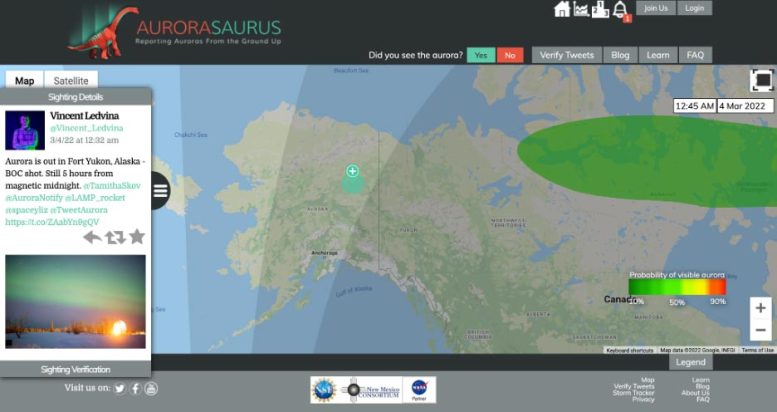
Rapport de l’Aurorasaurus site web.
